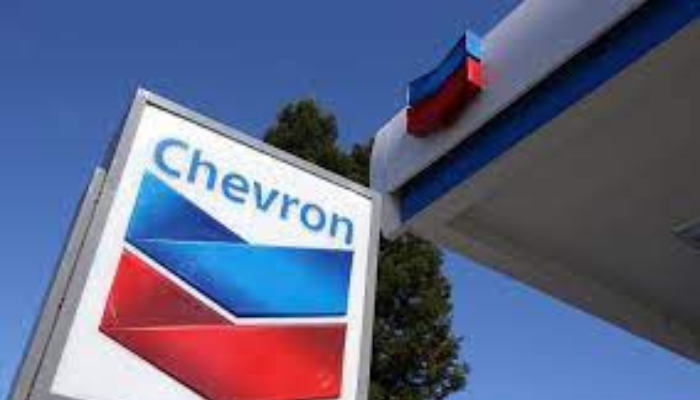Trump energy policies and changing consumer trends to upend oil supply and demand
US President Donald Trump’s energy and economic policies and changing consumption trends will slow down price-sensitive shale oil production while boosting gasoline uptake and exports of light crude, signalling new supply and demand patterns over the coming years.
US oil production, which rose by more than 50% between 2014 and 2024, is forecast to plateau after reaching record levels in the next few years, according to the US Energy Information Administration (EIA) and the IEA.
Output will rise from 13.21m b/d in 2024 to 13.37m b/d in 2025 and stay at that level next year, the EIA said in its July Short-Term Energy Outlook. The US, which accounted for 90% of the uptick in global supply between 2015 and 2024, is set to pump 13.39m b/d in 2026 and 2027 after rising to 13.41m b/d this year, according to the IEA’s Oil 2025 report, released in June.
“The political and economic outlook right now suggests that we will be in a traders’ world for some time to come, which is likely to mean a lower trajectory for US oil output” Alkadiri, Center for Strategic and International Studies
This is taking place at a time when eight OPEC+ countries are unwinding 2.2m b/d of voluntary cuts this year after speeding up their rollback between May and August, signalling a reversal of strategy from supporting prices since 2022 to regaining market share mainly lost to US producers. After adding these barrels in 2025, OPEC+ still has 1.65m b/d in voluntary curbs and 2m b/d in group-wide cuts to unwind by 2026 at a time when Brent is hovering around $65/bl, below the breakeven prices needed to balance the fiscal budgets of several members, including swing producer Saudi Arabia.
“The political and economic outlook right now suggests that we will be in a traders’ world for some time to come, which is likely to mean a lower trajectory for US oil output,” said Raad Alkadiri, a non-resident associate at the Energy Security and Climate Change Program at the Center for Strategic and International Studies.
“OPEC seems able and willing to live with prices in the $65/bl Brent range for the time being as Saudi Arabia drives a market share strategy amidst what it sees as permissive—or at least benign—fundamentals.”
OPEC’s forecast for US oil production is the outlier, projecting output will hit 13.6m b/d in 2030 due to the rollback of energy transition policies under the Trump administration, according to the producer group’s World Oil Outlook 2050, published in July. In contrast, the IEA is projecting US oil output will drop to 13.14m b/d by 2030.
Tariff effect
Already Trump’s global tariff war and increases in levies on steel, aluminium and now copper risk further slowdown in US oil production, as outlined in the second-quarter Dallas Fed Energy Survey, which polled exploration and production companies and oilfield service firms between 18 and 26 June. Although Trump started his tenure with several executive orders intended to create energy dominance and add 3m boe/d of production, output under his administration is set to drop from the peak reached under his pro-energy transition predecessor.
“It is hard to imagine how much worse policies and [Washington] DC rhetoric could have been for US E&P companies,” an unnamed E&P oil executive said in the survey. “We were promised by the administration a better environment for producers but were delivered a world that has benefitted OPEC to the detriment of our domestic industry.”
The US oil industry is plagued by the oscillation in energy policies between pro–fossil fuel Republicans and pro-energy transition Democrats, compounded by an oil surplus and price volatility that creates uncertainty and deters development plans.
Most E&P firms expect to drill fewer wells than initially planned in 2025, and the recent increase in steel and aluminium levies will worsen the outlook by raising costs, the survey showed.
“The numerous negative tailwinds—tariffs, oversupply of oil, consolidation and turmoil surrounding economic policy—will have significant impact on the domestic energy sector,” said an unnamed executive at an oilfield services firm in the survey. “A lengthy downturn is the logical outcome.”
Raising the alarm
A few US oil company CEOs have already sounded the alarm about a potential decline in production.
As far back as November, Occidental Petroleum CEO Vicki Hollub stated that “the US is at risk of losing our energy independence”, with shale output starts to plateau in the next five years.
A direr message came in May from Travis Stice, CEO of Diamondback, the largest independent oil producer in the Permian Basin, who said “we are at a tipping point for US oil production”.
In 2025, the IEA revised downward its projection for shale oil output growth by 2030 compared with last year’s report as lower oil prices lead to the scaling back of activity amid industry consolidation and the emergence of “increasingly complex wells”.
“A lot of the best acreage has been exploited already, so it is forcing companies to move to less high-yield parts,” said Alkadiri, who is managing partner at professional services firm 3TEN32 Associates. “They are innovating technologically to improve productivity, but that will only go so far.”
Investment is already being curtailed by the headwinds facing US oil companies, particularly independent shale firms, which have high production costs compared with conventional oil producers.
Global upstream oil investment is forecast to fall 6% year-on-year, to $420b, this year with “some of the largest declines in light tight oil” in the US, the IEA said in its Oil 2025 report.
“As long as volatility persists, and the price band is around $60–65/bl for Brent, then investment and production are likely to be muted, especially as the sector becomes more consolidated and is led by large oil and gas companies that are disciplined about spending plans,” said Alkadiri.
“It will also encourage companies to look abroad for investment, to provinces where there is greater predictability of the investment environment.”
US shale oil firm EOG Resources is one company that is eyeing projects outside its home turf. In May, the firm said it will work with Emirati state oil company ADNOC after it was awarded an unconventional oil exploration concession in Onshore Block 3 in Abu Dhabi, with drilling expected to start in second half of 2025.
Demand patterns
Trump’s policies will not only hamper oil production plans but will also change demand patterns, especially with the repeal of subsidies and regulations that foster higher sales of electric vehicles (EVs) and provision of financial support to renewables and low-carbon industries.
The IEA has revised upward its forecast for US oil demand in 2030 by 1.1m b/d, to 20m b/d, from last year’s 18.9m b/d projection due to expectations of tepid EV sales, lower gasoline prices and a faster economic growth outlook of 2.1% compared with the previous 1.7% projection.
“This is largely due to the different policy environment, making for a materially more challenging sales environment, as high prices in both absolute terms and compared to conventional cars as well as falling second-hand values have kept some US buyers on the sidelines,” said Jennifer Thomson, an oil markets research assistant at the IEA.
“The higher GDP growth forecast is in part due to more expansive fiscal and monetary policy in response to the tariffs.”
The IEA, which assumed last year that EVs would account for 55% of total US car sales in 2030, now expects this share to drop to 20%.
“[EV] sales in North America have underwhelmed and are far from the mandated level,” said Al Salazar, head of macro oil and gas research at consultancy Enverus. “In oil, substitution is a rather permanent event, when one replaces their ICE vehicle with an EV.”
However, the IEA’s revision of gasoline demand growth may be “overstated”, he added.
Trump’s pro–fossil fuel policies—centred around higher oil and gas production, nixing of renewable power subsidies and withdrawal from the Paris accord—is partly behind OPEC’s upward revision of its 2050 global oil demand forecast to 123m b/d, compared with last year’s projection of 120m b/d.
“A US exit from the Paris accord should directionally reduce headwinds on fossil fuel consumption,” said Salazar. “However, how much this spurs consumption is debatable, since the agreement was not legally binding to begin with.”
But a starker change in crude movement because of Trump’s energy and economic policies is likely to be in oil import and export trends.
“US refinery throughput is set to decline by around 600,000b/d due to closures and lower utilisation rates from falling domestic demand.” said Thomson. “With conventional crude production down marginally (100,000b/d between 2024 and 2030), this will drive an increase in exports, mainly of light sweet crude.”
Canadian exports
Canada, which sends 90% of its oil exports to the US, wants to boost it supply to Asia after the expansion of the TMX pipeline on its west coast amid Trump’s threats of higher trade tariffs.
Canadia’s heavy oil is the main feedstock for a majority of US west coast refineries at a time when alternative sourcing of this crude quality is curtailed by sanctions on Venezuela and plummeting production in Mexico.
“Efforts for Canadian supply to diversify its customer base, coupled with struggles from other heavy oil sources, could leave US refining capacity that is geared for Canadian heavy, short oil,” said Salazar.
A potential alternative to Canadian heavy crude could be Saudi oil imports, which fell to 273,000b/d in 2024 from a peak of 1.73m b/d in 2003, based on EIA data.
“There is speculation that in Saudi spare capacity a heavier crude could be a fit,” said Salazar. “We are unsure if it is; there are geopolitical considerations, but it remains a possibility. Other alternatives include refineries adjusting to best fit their kits to process available (lighter) crude while increased product imports could help compensate.”
Market forces
Despite Trump’s influence on the energy sector, market forces will ultimately determine the trajectory of US oil production and consumption.
“Oil and gas prices are dictated by market forces, while producers are held accountable by their owners and shareholders,” said Salazar. “Governments are guide rails for the energy industry. However, market-driven supply and demand forces are the ultimate dictators of energy outcomes.”
Source: Petroleum Economist








